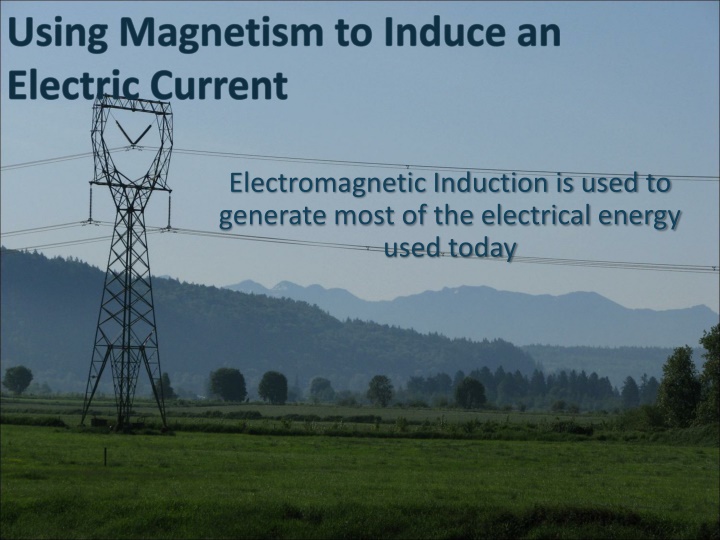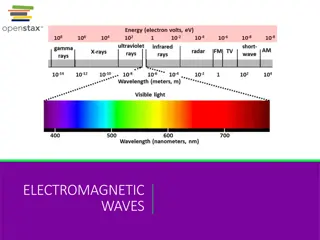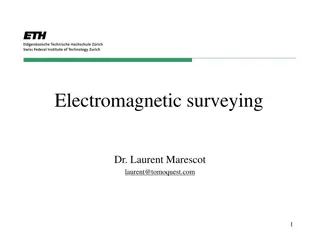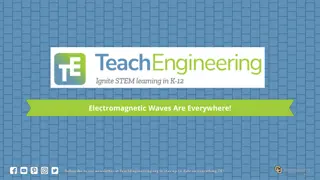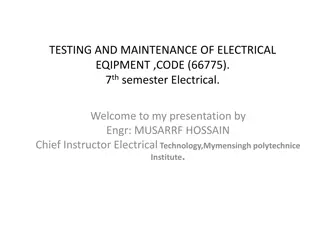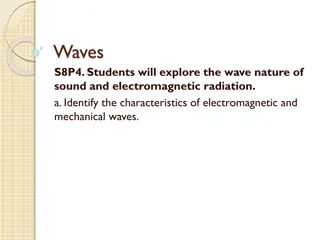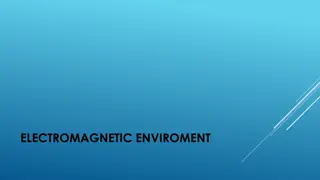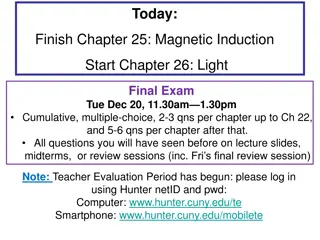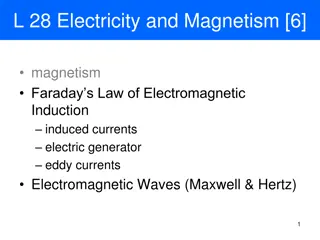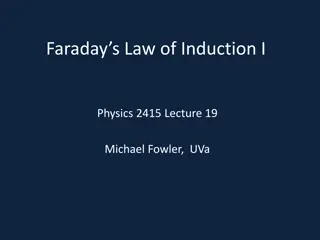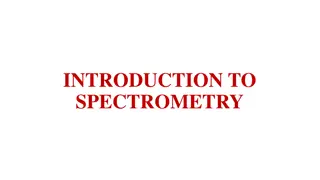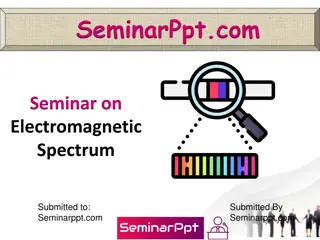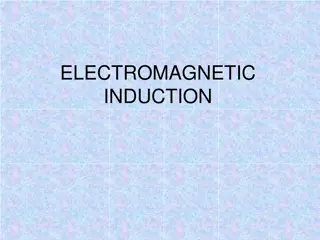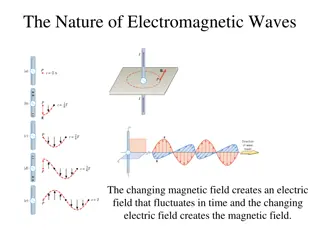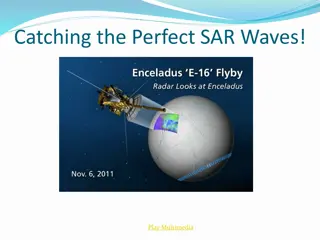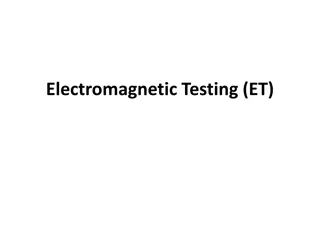Electromagnetic Induction in Generating Electrical Energy
Discover how electromagnetic induction is utilized to generate electricity, as explored by Michael Faraday. Learn about Faraday's law, factors influencing electromotive force, Lenz's law, and the principle of conservation of energy.
Download Presentation

Please find below an Image/Link to download the presentation.
The content on the website is provided AS IS for your information and personal use only. It may not be sold, licensed, or shared on other websites without obtaining consent from the author.If you encounter any issues during the download, it is possible that the publisher has removed the file from their server.
You are allowed to download the files provided on this website for personal or commercial use, subject to the condition that they are used lawfully. All files are the property of their respective owners.
The content on the website is provided AS IS for your information and personal use only. It may not be sold, licensed, or shared on other websites without obtaining consent from the author.
E N D
Presentation Transcript
Electromagnetic Induction is used to generate most of the electrical energy used today
The production of electricity by magnetism is called electromagnetic induction. Michael Faraday first demonstrated that magnetism can produce electricity. Faraday showed that when a magnet approaches a coil, a current is induced in the coil. The direction of induced current depends on the pole of the magnet that approaches the coil. A stationary magnet will not induce current. There must be motion of the coil or magnet to induce current. Faraday s law of electromagnetic induction: A changing magnetic field in the region of a closed-loop conductor will induce an electric current. A galvanometer is a sensitive current detector. This diagram illustrates electromagnetic induction. As the magnet is moved into the wire coil, current is generated in the coil.
A wire moving in a magnetic field produces electromotive force (emf). Electromagnetic induction also involves the production of electric potential difference (emf). Faraday discovered that three factors influence the magnitude of emf and induced current in the wire: The velocity of the wire the higher the velocity, the greater the emf and current. The strength of the magnetic field the stronger the magnetic field, the greater the emf and current. The length of the wire in the magnetic field the longer the wire, the greater the emf and current. A segment of a closed loop of wire moves through a magnetic field. Note that the wire must be perpendicular to the magnetic field in order for current and emf to be induced.
Lenzs law states that induced current and emf are in a direction that opposes the change that produced them. Lenz s law means that induced current creates a magnetic force that acts on the wire. This force always opposes the wire. Lenz s law thus obeys the law of conservation of energy it takes work to produce energy in a different form. Holding the hand flat will determine the following variables: Thumb: direction of velocity of wire Fingers: direction of magnetic field Palm: direction of induced conventional current
Lenz knew the cardinal rule That nature likes to conserve things (like energy) you can t get something for free So he reasoned that The induced current is such as to OPPOSE the CHANGE in applied magnetic field. This is Lenz s Law
Originally, when the magnet is not moving, the magnetic field is not changing. Suddenly, the magnet moves towards the coil and the field starts to increase. The current in the coil instantly starts up to counteract this increase. N
Right-Hand Rule for Induction in Solenoids According to Lenz s law, the induced current created by pushing a permanent magnet into a solenoid will create a magnetic field in the solenoid. The magnetic field creates a repulsive force against the permanent magnet. Holding the right hand with the fingers curled and the thumb extended will determine the following variables: The thumb points in the direction of the north pole of the solenoid. Fingers curl in the direction of induced current.
As the magnet approaches the loop, the applied magnetic field in the centre increases. This is a change. An Induced Field is created which attempts to cancel the applied field to keep the total field at zero its original value. This induced field must be a associated with a current the INDUCED CURRENT in the loop. You can determine the direction of the current by the RHR.
Determine the direction of the induced current in the solenoid shown below.
